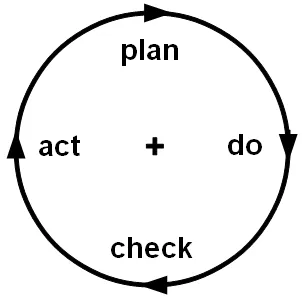OODA vs PDCA – What’s the Difference?
Blog: Form Follows Function

In my post “Architecture and OODA Loops – Fast is not Enough”, I stated that sense-making and decision-making were critical skills for the practice of software architecture. I further stated that I found the theories of John Boyd, particularly his OODA loop, useful in understanding and describing effective sense-making and decision-making. My conclusion was that in order to decide and act in the most effective manner possible, one must observe the context as effectively as possible and orient, or make sense of those observations, as effectively as possible. In other words, the quality of decision depended on the quality of the cognition.
One of the many things that I enjoy about blogging and engaging on media like Twitter and LinkedIn is the feedback. The questions and comments I get in response to one post ensure that I don’t have to worry about writer’s block getting in the way of my next one. In this instance, Greger Wikstrand obliged, providing the topic for this post:
As I replied to Greger, I was familiar with the PDCA cycle and it has some similarities to Boyd’s OODA loop, but I preferred OODA for a variety of reasons. Before I get into those reasons, however, it would be useful to lay out what distinguishes the two methods. In a guest post on the blog Slightly East of New, “PDCA vs. OODA — Why not take both?”, Deane Lenane does just this:
Some people who are familiar with the canon of both of these men’s work, often fall into the error of seeing the O-O-D-A loop as a function of the P-D-C-A loop or vice versa. I think this is a mistake.
The P-D-C-A cycle or loop is primarily an analytical approach that can be used with great success in a completely internal manner. One does not need to consult the external environment or adjust to unfolding circumstances to make the P-D-C-A loop work. P-D-C-A can be used with great success on the shop floor with the data that is available. Analysis which involves the use of a more or less complete data set to reach a conclusion. We use the data to make a decision about how to proceed, we than check and act to confirm or reject the hypothesis that our analysis has led us to.
O-O-D-A is more concerned with synthesizing an action out of an incomplete data set. Since we can never recognize all of the variables that we are forced to deal with in any environment, we must be able to make a decision that we believe will give us the highest probability for success. The synthesis of an action from the observation and orientation of a complex and mysterious environment, subject to frequent and unpredictable change, is the essence of the O-O-D-A loop.
My conclusion is that P-D-C-A is primarily involved with analysis perhaps using some synthesis and that O-O-D-A is primarily involved with synthesis using all of the analytical data points possible but considering that the data set will always be largely incomplete.
Three aspects of Lenane’s differentiation point me toward OODA: “environment” (i.e. the evaluation of the external context we must deal with rather than the more inward looking PDCA), “synthesizing an action”, and “incomplete data set”. Systems exist in an environment, an ecosystem with a back-story. Failing to account for those ensures problems if not outright failure. Likewise, our aim is to make a decision to the best of our ability under uncertainty. These concepts mesh nicely with the practice of architecture in my opinion.
Another aspect relates back to the PCA acronym in Greger’s tweet. That took some research for us to find a good resource, because:
However, Greger did find one (slide 3 of this deck). Essentially, it states that Perception of the world leads to Cognition which leads to Action that changes the world. Perception being the key word here. How we perceive reality is arguably more important than reality itself, because that perception will color our thinking that drives our action. The Orient portion of the OODA explicitly recognizes that our observations are filtered through our experience, education, biases, etc. Understanding and adjusting for this (to the extent we can) is important. As Tom Graves observed in “Enterprise-architect – applied-scientist, or alchemist?”:
Perhaps the most important thing here is to notice things that don’t fit our expectations – they’re often very easy to miss, especially given Gooch’s Paradox, that “things not only have to be seen to believed, but also have to be believed to be seen”.
Software architecture involves making decisions in the presence of uncertainty. In order to make the best decisions possible, we need to have the best possible grasp of our context (n.b. remembering that we are part of that context). We also need to remember that the context is not static. Each action (or inaction, for that matter) can lead to the emergence of some new issue. We can’t operate with a “one and done” philosophy.
[PDCA Loop diagram by Tagimaguiter via Wikimedia Commons]